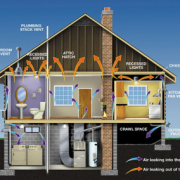written by Kansas City Regional Clean Cities Coalition director David Albrecht
There are plenty of popular ideas floating around about alternative energy, and about energy in general. Many are flawed, conspiratorial or just plain wrong. Should we call them “myths”? After all, a myth, even though supernaturally themed or wildly imaginative, can still be valid, revealing truths about human nature. The Odyssey or the tales of King Arthur come to mind. On the other hand, trying to explain something about the physical world by means of imaginative story-telling is a risky proposition. A case in point:

Anyway . . .
We do have a reliable system in place which does a really good job of explaining the physical world. It’s called “science”. Perhaps “meme” is the best name with which to tag these ideas in the age of cloud-based, cloudy online information. So, without further ado, here’s the first in a series of takes on popular memes about energy, renewable and otherwise – and what the data say.
The Deadly Menace of Wind Turbines . . . and Cats and Buildings and Cars . . .
Wind turbines can and do kill birds and bats. Fish and Wildlife Service estimates for the US range from 140,000 to around 500,000 birds killed per year. Songbirds account for the most fatalities, with raptors second. Digression – weirdly enough, it appears that the cause of death, at least for bats, isn’t being struck by blades. Instead, scientists have discovered that barotrauma (like the bends for scuba divers) may be the specific mechanism. Sudden, dramatic air pressure changes near blade edges are believed responsible for rupturing the lungs of bats found dead in wind farms with no other signs of injuries. End of digression.
As in real estate, optimal wind turbine placement is all about location. This is true for the site in general, and where you place individual wind turbines within a given facility. The original Altamont Pass wind farm (famously featured in the 80s movie “Less Than Zero”) in California is a classic example of a bad location, and was lethal to birds. At its peak, over 6,000 small turbines, some dating back to the 1970s, ran at high speeds birds had no chance of avoiding. At peak turbine count, Altamont Pass was killing more than 10,000 birds every year, including more than 2,000 eagles, hawks and owls. The good news is that after years of pressure and delays, removal of the oldest and deadliest turbines began in 2015. A complete replacement of 569 remaining 100 kW units with just 23 modern turbines was planned for completion by 2022. Problems are likely to persist after the repower. Even running at slower speeds, new turbines are so tall that their blades operate at the flight height of nocturnal migratory birds. But since upgrades and removals began at Altamont, overall bird deaths have dropped there by between 40 and 50%.
Where do wind turbines rank as a threat to wild bird populations? Short version – very close to the bottom. In 2018, the US Fish and Wildlife Service published its estimates for bird deaths by cause, drawn from multiple scientific studies. Here are their low-range numbers:
- Oil Pits: 500,000
- Electrocutions: 900,000
- Collision with electrical lines: 8,000,000
- Poison: 72,000,000 (median estimate)
- Collision with vehicles: 89,000,000
- Collision with building glass: 365,000,000
- Cats: 1,400,000,000
- Wind Turbines – 234,000 (mean estimate)
Bear in mind that this total – 1,838,400,000 bird deaths – is the sum of low-range estimates (with the exception of poison). High-range totals for the same categories produce an estimate of 3,536,700,000 annual bird kills through various human activities (and, of course, the activities of our four-footed, long-tailed furry friends). Even high-end estimated totals of bird deaths through wind turbines (327,586) amount to a total of .0092% of total mortality in the same high-end estimate. As wind power expansions continue, raw numbers of bird deaths will likely rise as well, but at a very low overall percentage of total mortality.
Wind Turbines And Human Health
The dangers of wind turbines to birds and bats are established. To some degree, they can be mitigated. What about us? For years, studies and anecdotal evidence have shown there are issues with noise from turbines. As noted by the College of Family Physicians of Canada, turbine noise can disrupt sleep, particularly as wind speed varies. The consensus : these issues are real, and reduce quality of life, and the closer people live to large turbines, the worse these problems.
Others living near wind farms have reported problems including headaches, fatigue and depression. These have been blamed on the flickering shadows produced by blades, or on infrasound – sounds too low for humans to perceive. However, an exhaustive study by the Council of Canadian Academies, which covered peer-reviewed, unpublished, and “gray literature” found only “limited” causal links between wind turbines and sleep deprivation. Evidence of connections to more serious issues – vertigo, heart disease, diabetes – was “insufficient”. In addition, other reports noted the following:
People living near wind turbines who received rent from them were “less likely to report adverse health effects” than other living nearby:
In two studies, two groups of test subjects were exposed either to silence, or to infrasound, through headphones after watching videos. Those who watched a video warning of the dangers of infrasound were more likely to report symptoms and more severe symptoms from infrasound, even if they were exposed to silence. Those watching a video minimizing the same dangers were less likely to report any symptoms.
To the best of our knowledge to date, the dangers to birds from wind power are real, but limited. The dangers to people seem minimal, though noise exposure can be harmful. And the successful uptake of a new technology doesn’t just mean the act of adopting it, but doing so carefully, with ourselves and the rest of the world in mind.

